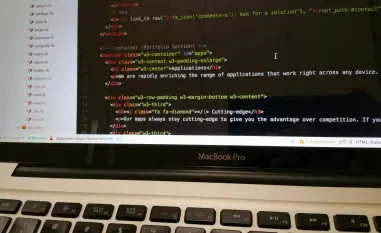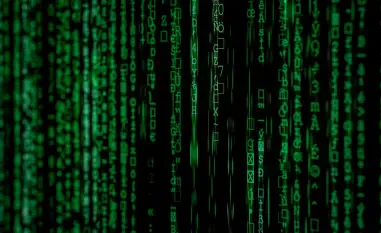In an era where digital battlegrounds are as critical as physical ones, a staggering reality emerges: European diplomats, entrusted with sensitive international negotiations, are under siege by sophisticated cyber espionage campaigns. Recent findings reveal a targeted operation by a group known as UNC6384, likely tied to Chinese-affiliated actors, striking at the heart of diplomatic entities in Hungary, Belgium, and beyond. This roundup delves into the multifaceted perspectives from cybersecurity experts, industry reports, and threat intelligence analyses to uncover the methods behind these attacks, the evolving tactics of state-linked hackers, and the defensive strategies needed to safeguard global diplomacy. The purpose here is to synthesize diverse insights and offer a comprehensive view of this pressing threat to international security.
Unpacking the Cyber Espionage Campaign Against European Diplomacy
Insights from Threat Intelligence Reports
Numerous cybersecurity reports have highlighted a coordinated campaign by UNC6384, a cluster believed to be associated with the Chinese-affiliated Mustang Panda group, targeting European diplomats. Observations made in recent months point to a sharp focus on entities in Hungary and Belgium, with potential outreach to other nations like Serbia. These findings underscore a calculated effort to infiltrate diplomatic communications, leveraging themes tied to real-world events such as European Commission meetings to craft convincing lures.
Differing analyses emphasize the strategic intent behind this operation, with some assessments suggesting a shift in intelligence priorities from Southeast Asia to Europe. This geographic pivot raises questions about whether the attacks reflect broader state-driven goals or the emergence of specialized regional teams using shared tools. The consensus among industry watchers is that such campaigns pose a direct threat to the integrity of international relations, demanding urgent attention from policymakers.
A key takeaway from these reports is the speed at which vulnerabilities are weaponized. The exploitation of a Windows shortcut flaw, identified as ZDI-CAN-25373, within just six months of its disclosure, demonstrates the agility of threat actors in integrating new exploits. This rapid adaptation challenges the traditional timelines of software vendors and security teams, prompting calls for accelerated patch management across governmental systems.
Varied Perspectives on Attack Methodologies
When examining the tactics employed by UNC6384, cybersecurity professionals note the prominent use of spear phishing as an entry point. These attacks often feature emails tailored to mimic legitimate diplomatic correspondence, such as invitations to conferences in Brussels. The precision of these lures, often paired with malicious LNK files and decoy PDFs, showcases a deep understanding of the target environment, making detection a significant hurdle for even well-trained personnel.
Another angle of discussion centers on the technical sophistication of the attack chain. Experts point out the exploitation of Windows vulnerabilities through cleverly disguised commands, such as whitespace padding in shortcut files, to execute malware covertly via PowerShell. Some argue that this level of detail indicates a well-resourced operation, while others believe it reflects a growing accessibility of exploit techniques in underground forums, blurring the lines between state and non-state actors.
A third viewpoint focuses on the deployment of PlugX, a remote access trojan with a long history dating back to 2008. Analysts highlight its modular design, enabling capabilities like keylogging and system reconnaissance, as evidence of its enduring relevance in espionage. While some see PlugX as a legacy tool, others warn against underestimating its adaptability, noting its frequent updates and integration into modern attack frameworks as a persistent menace.
Defensive Strategies: Expert Tips for Diplomatic Cybersecurity
Best Practices from Cybersecurity Firms
In response to the escalating threats, cybersecurity firms advocate for a multi-layered defense strategy tailored to diplomatic entities. Enhanced email filtering stands out as a primary recommendation, with systems designed to detect and block spear phishing attempts before they reach inboxes. This approach, while not foolproof, serves as a critical first line of defense against socially engineered attacks that prey on human error.
Beyond technical solutions, there is a strong push for diplomat-specific cybersecurity training. Industry leaders stress the importance of educating personnel to recognize subtle discrepancies in correspondence, such as unusual email domains or urgent requests that deviate from protocol. Some firms suggest simulating phishing campaigns internally to test awareness, though opinions differ on whether such exercises adequately prepare staff for the psychological manipulation embedded in real attacks.
Another focal point is the need for rapid patch management to address vulnerabilities like ZDI-CAN-25373. Experts note that the window between disclosure and exploitation is shrinking, urging organizations to prioritize updates and monitor for signs of compromise post-patch. A minority perspective cautions that over-reliance on patches can create a false sense of security, advocating instead for proactive threat hunting to identify intrusions that bypass known fixes.
Collaborative Approaches in Global Security
A recurring theme among international security analysts is the value of cross-national intelligence sharing to combat cyber espionage. By pooling data on attack patterns and indicators of compromise, nations can build a collective defense against groups like UNC6384. This collaborative model is seen as essential, especially as threat actors expand their geographic scope and refine their tactics to evade localized countermeasures.
Behavior-based threat detection also garners significant support as a forward-thinking solution. Unlike signature-based systems, which rely on known malware profiles, this method focuses on anomalous activities within networks, potentially catching memory-based malware or zero-day exploits. Some analysts, however, express skepticism about its scalability in under-resourced diplomatic sectors, arguing that implementation costs may outweigh immediate benefits.
Finally, there is a call to integrate cybersecurity into broader diplomatic policy frameworks. Experts from various think tanks suggest that cyber threats should be treated as a core component of international dialogue, influencing treaties and alliances. This perspective, while gaining traction, faces resistance from those who believe that politicizing cybersecurity could hinder technical cooperation, creating a divide in strategic priorities.
Reflecting on the Path Forward in Cyber Diplomacy
Looking back, the discussions and insights gathered from diverse cybersecurity sources paint a vivid picture of the sophisticated cyber espionage campaign orchestrated by UNC6384 against European diplomats. The blend of spear phishing, Windows exploits, and tools like PlugX reveals a persistent and evolving threat that challenges the foundations of diplomatic security. Moving forward, actionable steps emerge as critical, including the adoption of advanced email filtering and tailored training programs to empower diplomats against deception. Additionally, fostering international collaboration through intelligence sharing and embedding cybersecurity into diplomatic agendas offers a promising avenue to mitigate risks. As nations grapple with these digital intrusions, the next consideration must be the development of unified cyber norms to prevent escalation into broader conflict, ensuring that the digital realm becomes a space of cooperation rather than contention.













